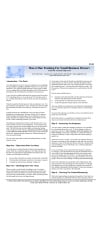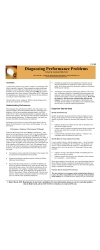If a tweet falls in the forest, does anybody hear? Tweets are wisps In the wind, and have less influence than most think
There are so many reasons why social media has exploded in popularity, but let’s look at what it “feels like” to use it. And, then we’ll look at how things actually work.
It feels wonderful to be able to “have a voice”. Anyone can tweet or update anything they please, and that feels amazingly empowering, something that is psychologically important in a complex world, where people are both lonely and desperate for emotional connection, and feel powerless in the face of a world that fosters a feeling that we aren’t in control of our own lives. It’s easy to have a voice. It’s no longer time consuming to have a say. You don’t have to be approved by editors, or get by phone screeners, or other filter points for viewpoints. It’s not even required that you have a rudimentary command of your language — punctuation, paragraphing, clarity to have your say.
Billions of people worldwide speak their minds. It feels so good to speak. To be listened to. To feel important. To have power and influence.
Except there’s one problem. Saying something is not the same as being listened to, but the need to speak out is so strong that people ASSUME there’s a multitude of people out there reading (or watching), paying attention, and being influenced by whatever one tweet or posts in status updates.
It’s an illusion. Saying and being heard are two completely different things, and when you look at actual behavior, you find that the gap between saying and being heard and understood, and influencing others is HUGE. There’s an illusion of influence, of meaningful connectedness.
Jack Stow’s Little Experiment
Jack Stow is a regular guy, actually a musician. He isn’t a social media professional, a pundit, or an self-proclaimed expert in social media or customer service. His curiosity was piqued by some research that indicated 71 percent of tweets never received a response. But, did that mean that most were never read? After all it’s conceivable that many people read tweets but don’t respond. So, he designed a little experiment to test things out. To quote: “If it can’t be easily done in a scientific way, let’s try an ad-hoc straw poll. So, I tried a single tweet, early in the morning, asking people to reply if they had read it. I got replies, thirteen in all. So my tweet was read and it was read by 0.41% of my followers. I then tweeted and asked others to post a tweet with the same text and see what response they got.
The results: In all he looked at six Twitter accounts. Response rates to his request to confirm the reading of the tweet ranged from 0.4–4.2 percent of followers. In other words, there was no indication that the tweet had been read by 95 percent of followers, best case scenario. Worst case? Only half a percent of followers, that would be one in two hundred followers, indicated they had read the tweet.
OK. So, yes, it is unscientific. It’s flawed methodology, and it doesn’t measure directly what is read and not read. The sample size is tiny. Still, I’m not sure whether Jack’s effort is all that different than the “professional, polished research” coming out of well known research firms. It simply lacks the veneer of good science, and Jack neither makes or states any conclusions. Neither do I. The results, though, do not surprise me. I believe they are highly suggestive of how people actually use Twitter. http://jackstow.com/blog/what-percentage-of-tweets-are-read/
Let’s look at some research that is based on behavior, not people’s perceptions or survey results or opinions. Fortunately, it’s possible to do this, particularly with Twitter, because they have permitted third parties to access their “stream” to gather quite precise data on how people actually behave.
First, the majority of tweets receive NO response from anyone. That means no comments, retweets, or clicking on links in the tweets. Various research findings over the Twitter years have concluded that somewhere between 68 to 82 percent of tweets receive NO response. It’s as if the tweets never happened. While one could argue that it’s possible people could read and be influenced by tweets without responding that is true. It’s possible. However, you’ll see later, when we look at the idea of “tweets in a stream” that it’s not likely.
Looking At The Responses
While it’s clear that most tweets receive no response, that still leaves about 30 percent that do attract enough notice to entice a reply, a retweet, or a link click. So let’s look at what people actually DO when they respond.
Dan Zurrella of Hubspot analyzed 2,778,452 tweets containing links to examine the relationship between retweets and clicks on the links embedded in the tweets. This is significant when it comes to understanding what real people do with tweets. Dan found that:
There is no correlation between retweets and clicks. In fact, 16.12% of the link-containing tweets I analyzed generated more retweets than clicks, meaning many people will retweet a tweet with a link without even clicking on that link.
In other words, a significant number of people paying “enough attention” to a tweet to pass it one aren’t actually reading the linked to content AT ALL. Dan also indicates that 14.64 percent of tweets with links in them received ZERO clicks on the links.A significant number of people who “act” on a tweet by retweeting it never even look at where the link takes readers. They are not seeing the content. If they aren’t seeing the content, they can’t be influenced by it.
Implications Of The Social Media Numbers For Customer Service
- Customers using social media have much less ability to actually influence or negatively affect a brand in any meaningful business sense.
- Even companies that have lots of followers, or friends get exceedingly small readership, since only a small proportion of those followers actually see their posts, and follow-ups and even fewer read them or pay any attention to them.
So, what “myths” about social media and customer service do YOU question. Let’s hear from you in the comments.






